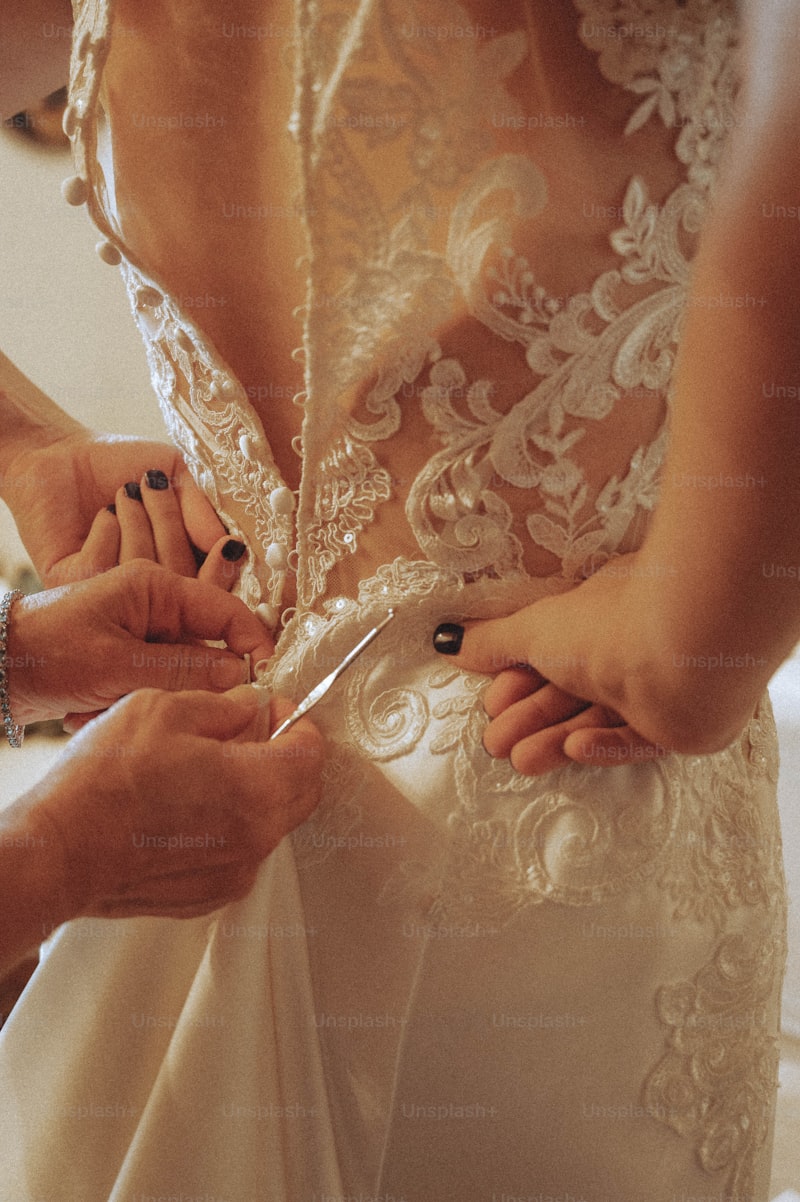Mastering the Wedding Dress Fitting Strategy: A Comprehensive Guide
Understanding the Wedding Dress Fitting Strategy
Embarking on the journey to find the perfect wedding dress is an exciting yet daunting process for many brides-to-be. The wedding dress fitting strategy is a crucial aspect of this journey, ensuring that the chosen gown complements your body and reflects your personal style. In this article, we’ll delve into the intricacies of wedding dress fittings, providing you with a roadmap to achieve the perfect fit.
The Importance of a Proper Fit
A well-fitted wedding dress not only enhances the bride's appearance but also boosts her confidence on the big day. A dress that fits perfectly allows for ease of movement, ensuring comfort while walking down the aisle, dancing, and celebrating. Here, we’ll discuss key factors to consider when developing your wedding dress fitting strategy.
1. Schedule Your Appointment Early
Planning ahead is essential when it comes to wedding dress fittings. Schedule your appointment at least six months before your wedding day. This timeframe allows for multiple fittings, alterations, and adjustments to achieve the perfect fit. Remember, Wedding dresses often require significant customization, so early appointments ensure you have ample time to refine the dress to your liking.
2. Know Your Measurements
Understanding your body measurements is a vital step in the wedding dress fitting strategy. Visit a professional tailor for accurate measurements, or have a trusted friend help you measure. Focus on key areas such as your bust, waist, and hips. Keeping a record of these measurements can significantly aid in selecting the right size from various designers.
3. Research Your Desired Styles
Before attending fittings, gather inspiration by researching different dress styles. Look for gowns that fit your body type and reflect your wedding theme. Popular styles include:
- A-line dresses
- Mermaid gowns
- Ball gowns
- Sheath dresses
- Tea-length dresses
Visual aids such as Pinterest boards or saved Instagram posts can help communicate your vision to the dress consultant during your fitting.
| Dress Style | Body Type Suitability | Best Accessories |
| A-line | All body types | Natural waist belts, statement earrings |
| Mermaid | Hourglass figures | Long earrings, bold necklaces |
| Ball Gown | Petite or pear shapes | Tiara, embellished gloves |
| Sheath | Lean and tall figures | Dainty jewelry, minimalistic wedding shoes |
| Tea-length | All body types | Vintage accessories, ankle strap shoes |
4. The Role of Undergarments
Choosing appropriate undergarments for your wedding dress fitting cannot be overstated. The right bra and shapewear can significantly impact how the dress fits and looks. It is advisable to bring the undergarments you plan to wear on the wedding day to your fitting appointments. This will allow you to see how the dress fits over them, enabling accurate adjustments and ensuring a smooth silhouette.
5. The Fitting Process
During your fitting, communicate openly with your consultant about any concerns or preferences. Here’s what to expect during the process:
- Initial Assessment: The consultant will assess your body shape and discuss your vision for the dress.
- Dress Selection: Try on various styles based on your previously researched options.
- Marking for Alterations: Once you find a favorite, the consultant will mark the dress for necessary adjustments.
- Feedback Loop: Provide feedback regarding comfort and fit, ensuring adjustments align with your expectations.
6. Multiple Fittings
Don’t be surprised if multiple fittings are required before your gown is perfect. Each fitting will bring you closer to your ideal look!
- First Fitting: Focusing on the overall structure.
- Second Fitting: Detailed adjustments to the bodice and hemline.
- Final Fitting: Ensuring the dress feels perfect and looks exactly as you imagined.
7. Budgeting for Alterations
While selecting a wedding dress is crucial, budgeting for alterations should also be a priority. Alteration costs can vary widely depending on the complexity of changes needed, so it’s wise to set aside a portion of your dress budget for this purpose.
8. Managing Expectations
It’s important to maintain realistic expectations during the fitting process. While alterations can work wonders, not every design will fit every body type perfectly. Embrace the journey of finding the right dress that complements your unique shape and style.

Wrapping Up: The Wedding Dress Fitting Strategy
In conclusion, mastering the wedding dress fitting strategy is vital to ensuring you look and feel your absolute best on your wedding day. By scheduling early appointments, understanding your measurements, and actively participating in the fitting process, you pave the way for a stress-free experience.
Remember that achieving the perfect fit may take time and several alterations, so maintain an open line of communication with your consultant. Always consider your comfort and personal style, and don’t hesitate to express your needs during fittings. In the end, the right wedding dress will not only fit you beautifully but will also encapsulate the essence of who you are.
Final Tips:
- Always bring your wedding shoes to fittings.
- Consider the season and location of your wedding when choosing dress materials.
- Keep an open mind — sometimes styles that don’t initially appeal to you could surprise you!
- Trust the expertise of your consultant and allow their guidance to shape your final decisions.
With these insights, you'll be well-equipped to navigate your wedding dress fitting journey, ensuring a memorable experience leading up to your special day.